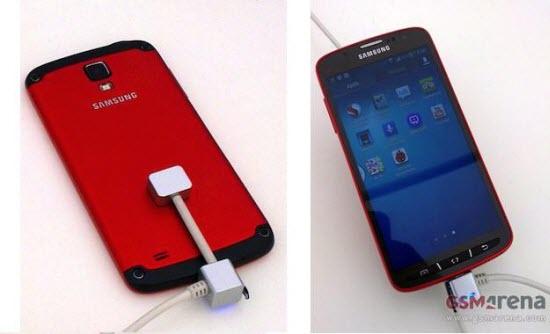

Smartphones are inching towards perfection on many levels this year. From the build and design of the HTC One, to the sheer freshness of Jolla's smartphone running Sailfish OS, the choices feel endless. But it's clear that when these devices come to market is when they're destined to bask in popularity, or melt in entropy.
Durable smartphones are trending this year. LG, Samsung, Sony, and most recently, Kyocera, have added dust and waterproofing to their feature set. But it's going to take a heavy marketing push to put these devices into the spotlight seeing that each complements other flagship devices in each manufacturer's portfolio of tech.
But considering that we do not yet know the prices of the LG Optimus GJ or Samsung Galaxy S 4 Active, the two most high-end of waterproof devices coming down the spout, it only makes sense to speculate how their most prized feature will fare in the wild. At this moment, I feel it's long overdue. Even if these devices tip the register above the competition, at least you'll have a feature which is undeniable. I'd gladly pay for a device that was guaranteed to work after a light splash of water...or complete submersion. It's one less thing to worry about when you're walking in the rain, or out at the bar.
Waterproof devices may have the "it factor" that manufacturers have decided to marry with quality, and I'm honestly wondering why it took so long for such a simple idea to make it to the feature menu.
Essentially, this trend of durable devices means manufacturers are taking ownership of how their products actually perform in the real world, instead of hiding behind an insurance policy or warranty. Sure, both factors will be included in the fine print of each advertisement we witness if more devices come to market with durable features, but this is still a cause of joy for the mobile pool.
There's nothing worse than being shunned upon returning a device which you have damaged by accident, or by a series of unfortunate events, only to find out that the humid, warm shower you took yesterday morning caused your water damage indicator to read positive. In the end, water damage is a highly sought after defense of warranties. The thought process behind it being that you obviously need to make sure your device doesn't come into contact with any moisture since it doesn't bode well with electronics. It's standard for electronic devices.
I'm pretty impressed by how far smartphones have come. To think you now have the ability to submerge the Kyocera Hydro Edge and Sony Xperia ZR underwater for 30 minutes makes me giddy with jealousy. Just yesterday I splashed water on my HTC One and frantically aired out each crevice in the device (which wasn't too difficult due to the zero-gap construction). After my systolic and diastolic pressures resumed normality, I had a moment where I wished they made a Lifeproof case to protect my daily driver.
But then I thought about it again and reached this conclusion: I'd like all my smartphnoes to be waterproof, or at the very least, water resistant, for this very reason.
Daily life is full of splashes and spills when you're least expecting it. Your smartphone need only be in the wrong place at the wrong time and it could suffer dire consequences at the expense of a valuable warranty or expensive insurance policy.
Many manufacturers (if not all) add a water damage indicator in each device to clearly show if the the device has come in contact with a certain amount of moisture. In this case, the carrier or manufacturer (depending whose warranty is in question) determines if any malfunctions were caused by the moisture.
Yet smartphones which are waterproof to begin with epitomize what many OEMs are struggling to convince mainstream buyers of in the first place: this device is more durable and built better than that competitor's product.
When I first started here at PhoneDog earlier this year, I wrote about Sony's push for durability. I asked you if it was their "saving grace" of sorts in mobile for 2013. It's clear they've started a trend up until this point as evidenced by dust and waterproof devices pouring from the competition. It's just another way we are witnessing the playing field get leveled, and many manufacturers ought to take note that there are ways to actually prove one device is more durable than another like Sony has been doing for so very long.
Of course, most devices which can withstand your everyday dust storm, or jacuzzi mishap tend to be of unibody construction meaning there is likely no option of expandable storage and removable batteries. But in my experience, the Apple iPhone 5, HTC One, and Nexus 4 already lack these features, which is another reason to move your data to the cloud. Do these trade-offs add up to a better user experience? Arguably, yes.
Then there's the option of waterproofing a smartphone through a third-party retailer like Liquipel or HZO, but in order to do so, you need to send your smartphone to them for the nanotech application. If this technology was incorporated to each device upon construction, it would make so much sense to me. I understand dust and shock proofing smartphones isn't everyone's idea of a necessary standard feature, but moisture is most tech's Achille's Heel. Isn't it time something was done about it?
I'm convinced that smartphones should be waterproof. It's just one less thing to worry about in my eyes. What do you think? Does making a device waterproof give it an edge over the competition, or should it be a standard feature?
Images via Digital Trends and Androidspin.
- Log in to post comments
